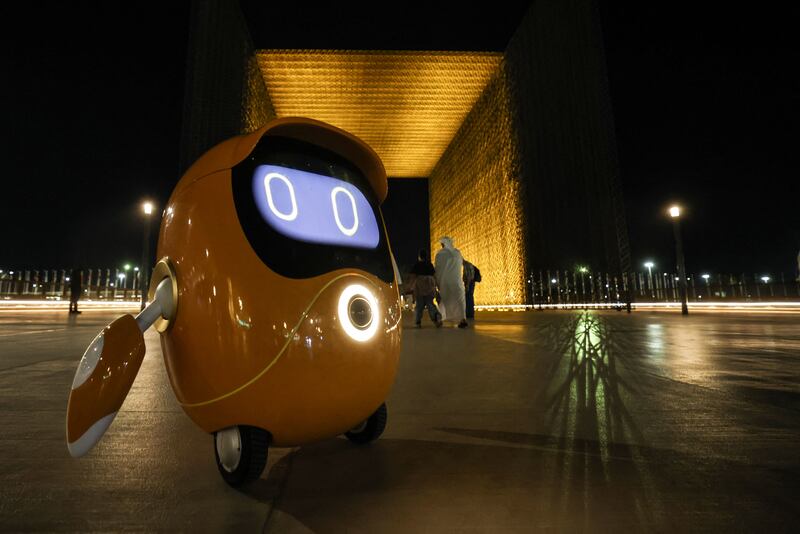Digital transformation is one of the key enablers of sustainability with a proven payoff – for people, profit and planet. Now it is time to put it to work to achieve net zero before the 2050 deadline.
When the UAE set a strategic target last month of achieving net zero global emissions by 2050, the nation once again demonstrated its readiness to take bold decisions for the greater common good. The move strengthens a track record of leadership over the past 50 years.
Now comes the challenge of balancing our net zero ambitions with global economic growth that has so far relied on fossil fuels.
The UN data indicates that the world is on track for mean temperature increases of 2.7°C by 2100 and an expected 16 per cent rise in global greenhouse gas emissions (GHGEs). And as we seek ways to reduce GHGEs for the benefit of future generation, we must also simultaneously work to fulfil existing commitments.
Success will not be easy or straightforward but the good news is we already have the means to achieve net zero. The software to reach net zero is available, and it is affordable and accessible.
Fourth Industrial Revolution (4IR) technology such as artificial intelligence, machine learning, cloud computing and the industrial Internet of Things can help achieve 70 per cent of the UN’s Sustainable Development Goals, thanks to its ability to help increase systemic productivity while identifying reductions in emissions and waste.
With the right technological toolkit, net zero is compatible with clean growth.
From our experience, four key strategic planks stand out.
Unleash the power of Industry 4.0
AI and robotics are transforming our lives and driving the rapid innovation of industrial processes. The UAE’s future-focused Operation 300bn recognises that industrial innovation spurs sustainable economic growth. The initiative will add Dh25 billion to national gross domestic product by 2031, principally by using 4IR technology to create new value.
To understand innovation in action, consider how an AI algorithm improves decision-making by performing repetitive tasks at superhuman levels. At Duke Energy, round-the-clock monitoring of 60 plants across the US offers early warning notifications – in one instance, saving more than $34 million in a single catch.
Industry 4.0 is here; how we channel its potential will determine how quickly we can achieve net zero.
Design better renewable energy installations
Cleaner and more resilient economies require renewable energy. The International Energy Agency says annual renewable electricity installations must triple by 2030 if we are to achieve net zero emissions. A formidable target, but not when we consider the UAE’s decarbonisation achievements over the past 15 years, such as the Barakah nuclear energy plant and the enormous solar energy parks.
Applying predictive analytics to industrial data can help to develop greener assets. Danish energy major Orsted, for instance, uses operational feedback from 1,000 offshore wind turbines to design more efficient renewable energy plants. Innovation is a continuous process of refinement that can be scaled up using technology when time is of the essence.
Promote value-chain optimisation across existing industries
Retrofitting existing brownfield assets can optimise value chains, reduce waste and improve efficiencies. Advanced technology enables a company workforce to enhance production processes and identify improvement opportunities by providing enterprise-wide visibility.
Adnoc’s Panorama Digital Command Centre offers a unified, integrated and real-time visualisation of operational key performance indicators across the company’s installations. The single-window view of 10 million tags and 120 dashboards has helped to drive savings estimated between $60m and $100m.
Build partnerships across the ecosystem
Net zero depends on collaboration and co-innovation. While individual nations and companies must do their part, only co-operative action will realise the critical mass necessary to win the Race to Zero and achieve climate positivity.
Biofuels leader Neste is beginning to use data collected across its value chain to improve its operations, and to help other companies to reduce their emissions towards attaining carbon neutrality.
Such technological partnerships link enterprises along a central digital data thread that enables clean growth within enterprises and beyond when linked to suppliers, partners and peers. Data sharing can support net zero across the ecosystem.
We have a remarkable opportunity to reshape the future. The digital tools to do so are at hand but the scale of our ambition suggests that only a multidimensional and inclusive approach can achieve net zero emissions.
I am inspired by the words of Sheikh Zayed, the Founding Father: “Our job is to do the impossible and achieve the unusual in the things that bring happiness to people.”
The past year has shown that humanity is capable of achieving what seems impossible when we put advanced technology to work in service of a common goal. Now, it is time to harness that ability for the benefit of everyone.
Peter Herweck is the chief executive of Aveva, a UK-based industrial software company





